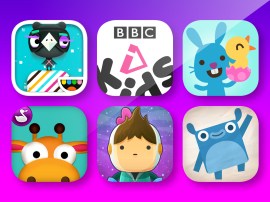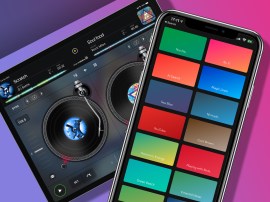Windows 10 might just win the app war. Here’s why
Could Microsoft really end up with more mobile apps than Google and Apple? Yes it could, thinks Gary Marshall

Windows has an app problem.
We saw it with the ill-fated Windows RT, when some of tech’s biggest names thought about making RT apps, chuckled and said “naaaaaah”. And we can see it right now on Windows Phone, which boasts 120,000 certified apps compared to Apple’s eleventy billion. We’re exaggerating, but only just: the combined app count of the Apple and Google stores is 2.5 million.
Microsoft has a solution to this app gap, and it’s pretty clever: if app developers won’t come to Windows, then Windows will come to them.
It’s clever, but it’s not quite as simple as we’ve made it sound there. Getting iOS and Android apps on to Windows is much, much easier than before, but it’s not exactly a one-button process.
As Microsoft points out, it’s quite similar to what happens with Amazon, who use a version of Android for their Kindle Fire devices: once developers have created their app they then need to do some Amazon-specific faffing around so the apps work on Kindles.
For Windows, that faffing depends on what platform your app runs on. If you’re an iOS developer it’s quite straightforward: take your existing code, hook it into the various Windows APIs, compile it into a Windows app and Bob’s your mother’s brother.
It’s a bit more complicated coming from Android, because Microsoft has created an Android subsystem inside Windows that offers a kind of Android Lite. Microsoft will go into more detail about that this week, and about the tools it’s offering website owners to turn their sites – which people often don’t pay for – into Windows Store apps, which people are often much happier to pay for.
It’s an interesting and potentially enormous move, because these days consumer app developers are often iOS first, Android second and Windows mumble mumble. That’s because iOS users are more likely to spend real cash money, and while Google’s users are less generous there are many more of them, so they’re still worth targeting.
By the time developers have catered for both customer bases they’re either too tired to make a Windows one or just don’t think the potential returns are worth the effort.
Microsoft’s new plans could change all that, creating a kind of virtuous circle in which developers can put their apps into Windows with minimal fuss, users can get the apps they want, developers can sell more apps, and Microsoft can get more people on Windows. Net result: everybody’s happy.
Well, almost everyone. A quick browse of Twitter after the announcement turned up plenty of cynical voices within the dev community:
Chaos. MS is panicking. that’s my take from the way they have ported Android/iOS into the platform. #Build2015
— Ariel Ben Horesh (@ArielBH) April 29, 2015This is my concern though, Android subset and iOS Objective C. What is the lag and update story? Confuses my world. #Build2015
— Kurt Brockett (@kurtbrockett) April 29, 2015#Android apps on my #windowsphone #lumia sounds interesting but hope its better than porting of #blackberry #Build2015 #Windows10
— S Aadeetya (@aadee_ram) April 29, 2015I can’t remember if I cried When they fell beneath the Android tide It’s time to join the Java side The day my WinPhone died #Build2015
— Matthias Shapiro (@matthiasshap) April 29, 2015Then again, it’s natural to hear a few dissenting voices before a big change.
The fact is, if it works it might just be one of the smartest mobile moves Microsoft has ever made. And given how far it is behind Apple and Google, Microsoft will be desperately hoping that it does.



